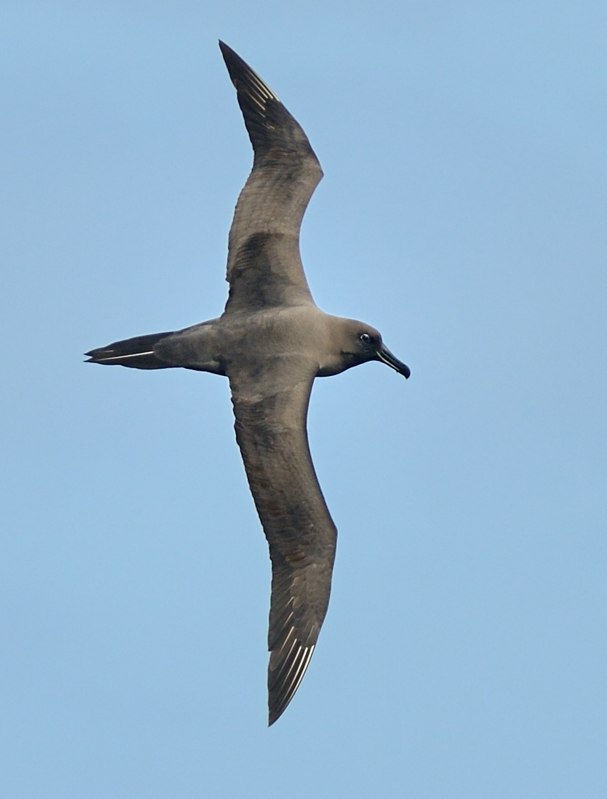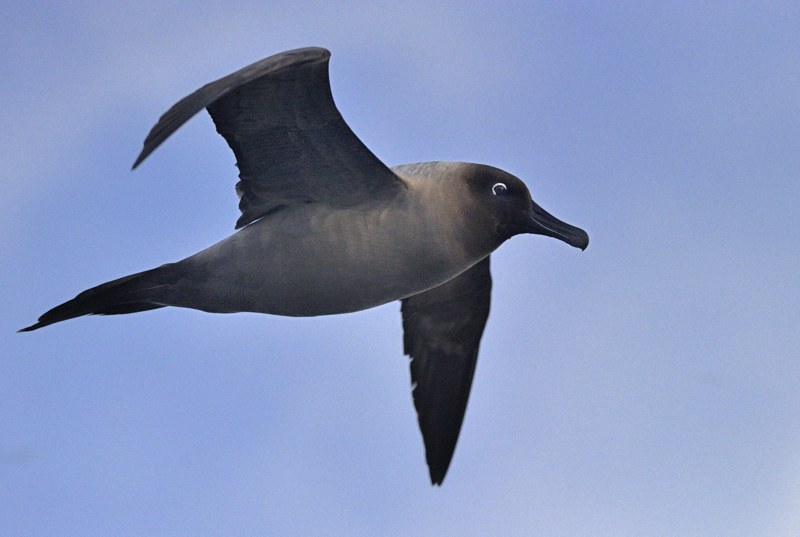 Sooty Albatross in flight, photograph by Kirk Zufelt
Sooty Albatross in flight, photograph by Kirk Zufelt
Yves Cherel (Centre d’Etudes Biologiques de Chizé, Villiers-en-Bois, France) and colleagues have published open access in the journal Endangered Species Research on the trophic ecology of Sooty Phoebetria fusca and Light-mantled P. palpebrata Albatrosses.

Light-mantled Albatross, photograph by Kirk Zufelt
The paper’s abstract follows:
“The trophic ecology of the Endangered sooty albatross (SA, 4 populations) was investigated using the concept of isotopic niche as a proxy of the trophic niche, and its isotopic metrics were compared with those of the congeneric Near Threatened light-mantled sooty albatross (LMSA, 4 populations). Three features differentiated SA from LMSA. (1) Feather δ13C and δ15N values of chicks and breeding adults were overall higher in SA than LMSA. This translates to more northern foraging grounds in the former than the latter species, with SA favouring warmer subtropical waters and LMSA colder waters of the Southern Ocean where they feed in part on low trophic level prey (likely Antarctic krill) at high latitudes. (2) Interestingly, Som the Atlantic (Gough Island) differentiate from SA of the Indian Ocean (Marion, Crozet and Amsterdam Islands) by adult birds foraging primarily within the Southern Ocean in a similar way as LMSA from South Georgia, Marion, Crozet and Kerguelen Islands. (3) Calculations of the trophic niche width at the population and individual levels showed that SA from the Indian Ocean are specialist populations, while Gough Island SA and the 4 LMSA populations are generalist populations that include both generalist and specialist individuals. Consequently, both the preferential use of warm waters and the narrow trophic niche width of SA from the southern Indian Ocean imply a higher risk for SA than LMSA of being killed by subtropical tuna longline fisheries and being negatively impacted by environmental changes. Conversely, the preferential use of cold waters together with a large trophic niche width of SA from Gough Island suggest fewer negative interactions with direct and indirect human activities.”
Reference:
Cherel, Y., Jaeger, A., Carravieri, A., Jaquemet, S., Phillips, R.A., Wanless, R.M. & Richard, P. 2025. Trophic ecology of sooty albatross, segregating mechanisms from the congeneric light-mantled sooty albatross, and conservation implications. Endangered Species Research 57:45-57.
John Cooper, Emeritus Information Officer, Agreement on the Conservation of Albatrosses and Petrels, 23 May 2025

 English
English  Français
Français  Español
Español